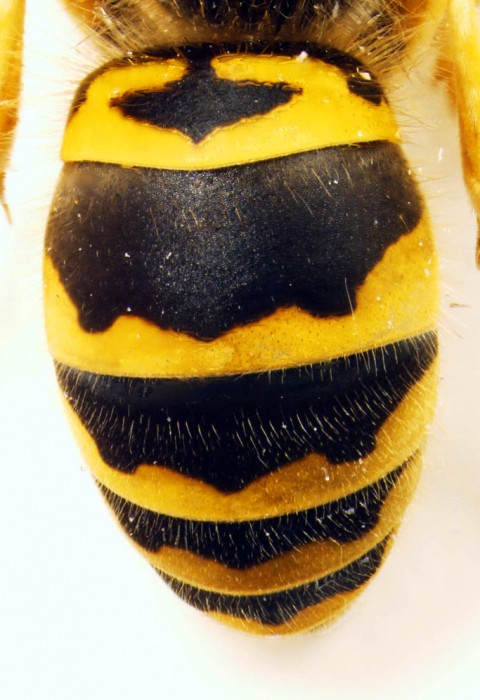Order: Hymenoptera
Family: Vespidae
Genus: Vespula
This wasp, Vespula maculifrons, was found near the Levine Science Research Center. Vespula maculifrons is also known as the Eastern yellow jacket, and is one of the most common wasps in the Eastern United States. Their most distinguishing feature is the yellow and black stripes on their abdomen, in a pattern that differs between the queen, adult males, and adult females. They build nests in the ground or in stumps and logs. Females of Vespa mate and are fertilized in autumn. These females overwinter and found colonies the next spring, of which they become the queens. Her offspring are sterile females that expand the nest and take care of the young. These wasp are fierce predators that primarily hunt other insects to fed to their larvae in the nest. They also feed on nectar, which is used as an energy source for flight.

Vespula maculifrons – Eastern Yellowjacket

Vespula maculifrons – Close frontal view of head

Vespula maculifrons – close up of terga
Vespula maculifrons on Bugguide.net
Vespula maculifrons on Wikipedia
Sources
(2) Andrews, C, The Lives of Wasps and Bees, (1969) London, Chatto and Windus.
(3) Milne, L.J. and M. Milne, National Audubon Society Field Guide to North American Insects and Spiders, (1980), New York, A.A. Knopf.
